Serving temperature Hot or cold | ||
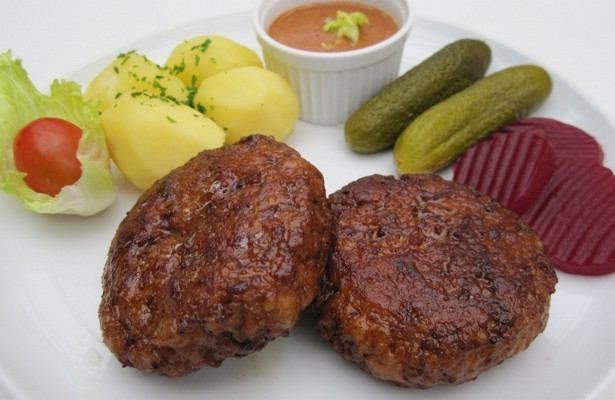 | ||
Place of origin Uncertain;
supposedly Denmark Other information As a main dish, generally served with boiled potatoes and gravy, or creamed cabbage Main ingredients Pork, Veal, Lamb and mutton, Beef Similar Meatball, Cutlet, Ground meat, Beef, Pork | ||
How to make frikadeller a homemade danish meatballs recipe for lunch dinners and leftovers
Frikadeller are flat, pan-fried dumplings of minced meat, often likened to the Danish version of meatballs. They are a popular dish in much of Europe, especially Germany, where they are known as Frikadellen, Buletten, Fleischküchle or Fleischpflanzerl, Austria, where they are known as Faschierte Laibchen and Denmark, their supposed country of origin. Through cultural exchange with the aforementioned countries, frikadeller have also entered national cuisines of other European countries such as Faroe Islands, Norway, Poland, Slovenia, Croatia, Russia, Estonia, Ukraine, Latvia, the Netherlands, Lithuania as well as in South Africa, where they form part of the Afrikaner culinary heritage. In Sweden, poached quenelles are called frikadeller and are usually served in soup. In Hungary, it is called fasírt and often accompanies the Hungarian stew type, the "Főzelék".
Contents
- How to make frikadeller a homemade danish meatballs recipe for lunch dinners and leftovers
- Frikadeller danish meatballs with cheese kids cooking
- Etymology
- Other variations
- References
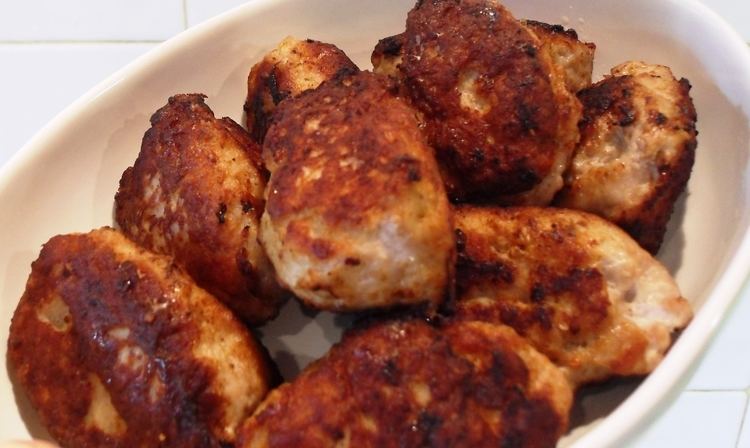
Many variations of frikadeller exist but traditionally they are made of minced veal, pork or beef (or a blend of two of these meats); chopped onions; eggs; milk (or water); bread crumbs (or oatmeal or flour); salt; and pepper; then formed into balls and flattened somewhat. They are then pan-fried in pork fat or beef fat, or more commonly in modern times in butter, margarine or even vegetable oil. Another popular variation is fiskefrikadeller replacing the meat with fish as the main ingredient and often served with remoulade.
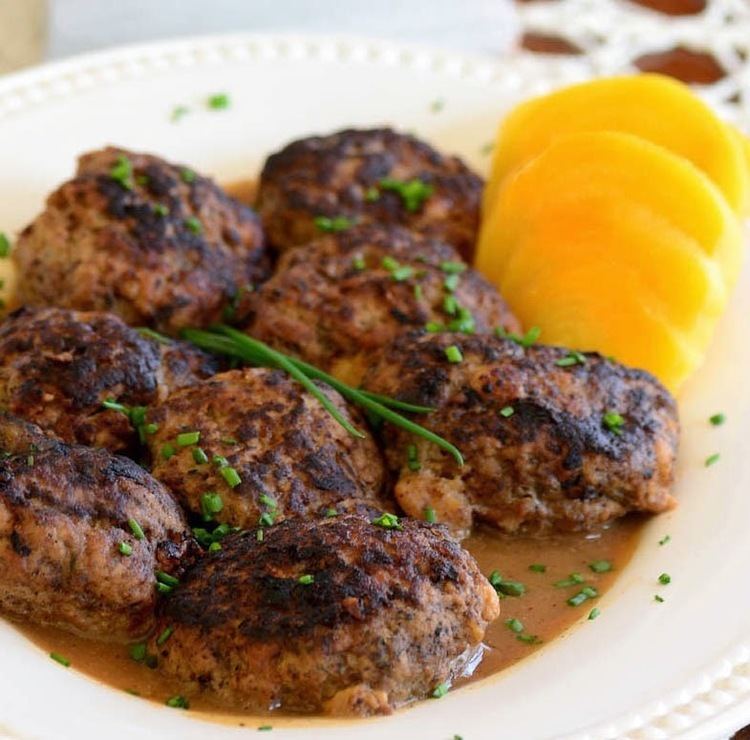
As a main dish they are most often served with boiled white potatoes and gravy (brun sovs) accompanied by pickled beetroot or cooked red cabbage. Alternatively they can be served with creamed, white cabbage.
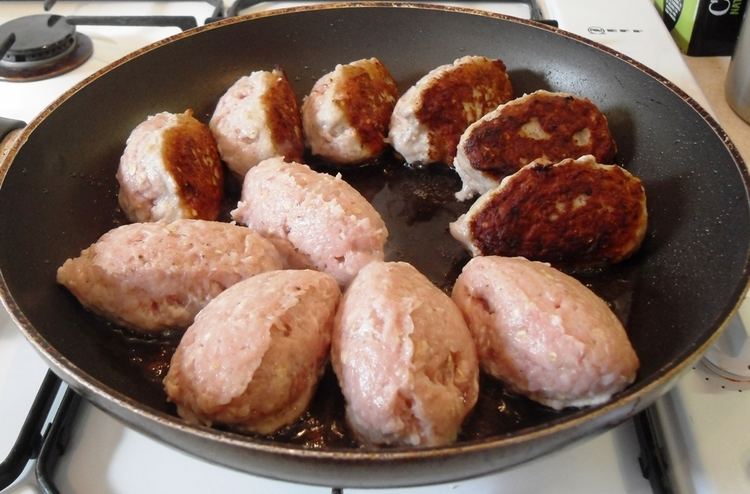
Frikadeller are also a popular choice on the Smörgåsbord or Swedish lunch buffet, eaten on rugbrød with red cabbage or pickle slices. They can also be served cold, sliced thinly as a base for open face sandwiches on rye bread.
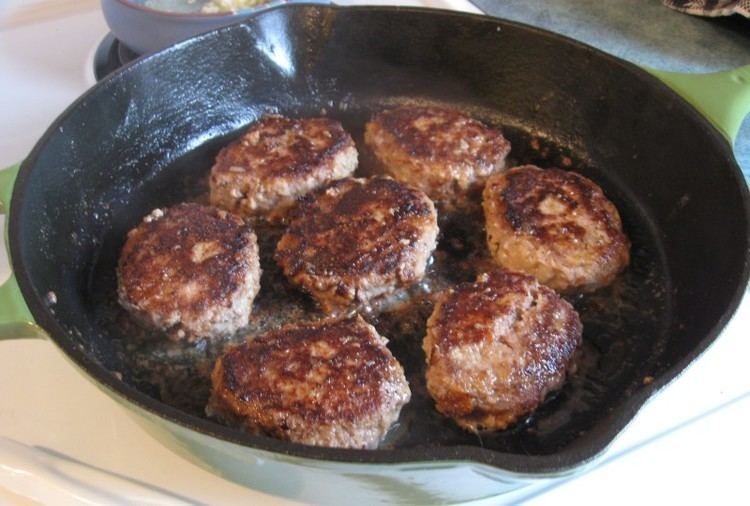
The combination of frikadeller and a cold potato salad is very popular at picnics or potlucks, due to the ease of transporting either component after cooking.
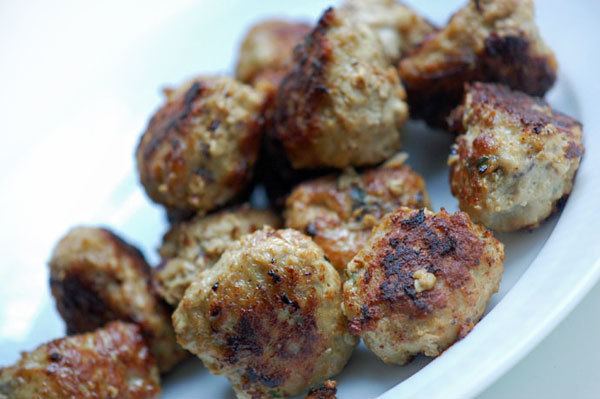
Frikadeller danish meatballs with cheese kids cooking
Etymology
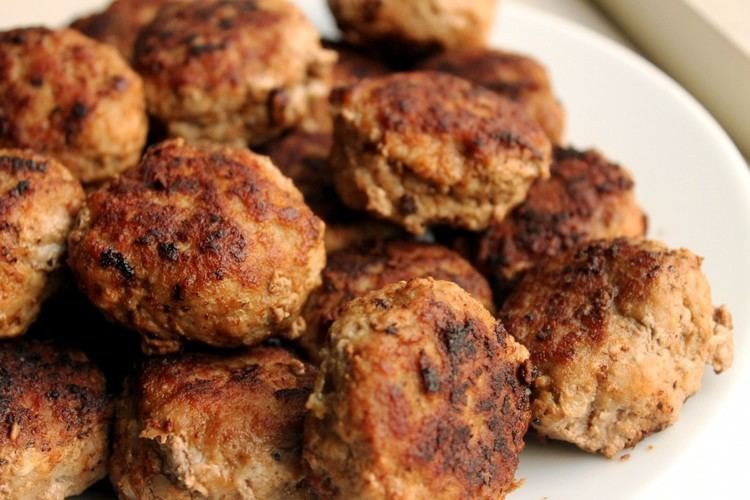
The origin of the word is uncertain. According to the Etymologisches Wörterbuch des Deutschen, it can be found end of the 17th century in German, and is related to the Italian 'frittatella', French 'fricandeau', and Latin 'frīgere' (roast). It may be derived from fricandeau de veau, a dish of sliced veal, larded with pork fat. In the Dictionnaire des dictionnaires (1837) 'fricadelle' is defined as, "In Belgium, a ball of minced, cooked meat" and a separate word, 'fricadèle', is defined as "fricandeau". And in Phillips's New World of Words (1706) "Fricandoe, a sort of Scotch Collops made of thin slices of Veal, well larded and stuff'd." The Oxford English Dictionary defines 'fricandele' (variation 'fricadelle") as a "quasi-French form of fricandeau".
Other variations
Frikadeller is also known in Indonesian cuisine through Dutch cuisine influence and called perkedel, however the main ingredient is not meat, but mashed potato, sometimes slightly mixed with ground meat or corned beef. The mixture is then shaped into flat round patties and dipped in egg yolk before being deep fried. Other than mashed potato, cabe rawit, spring onion, shrimp, peeled corn, or mashed tofu fritters are also common as perkedel ingredients.
Another legacy of the Dutch colonial influence is the Frikkadels found in Sri Lanka. They are mostly found in lamprais.
